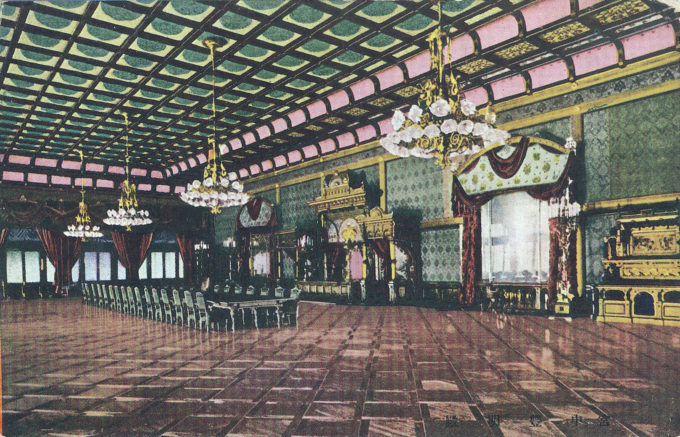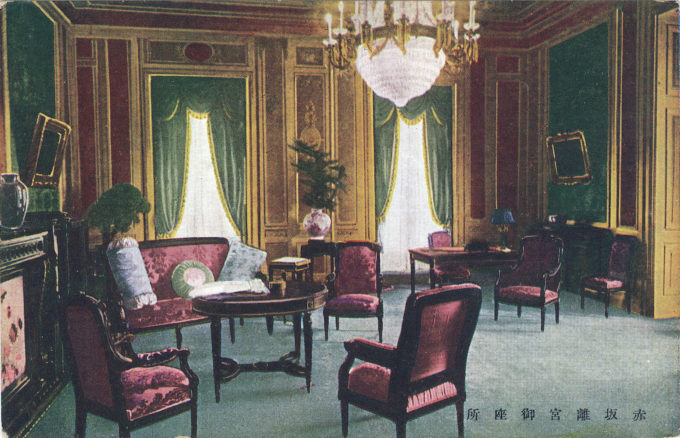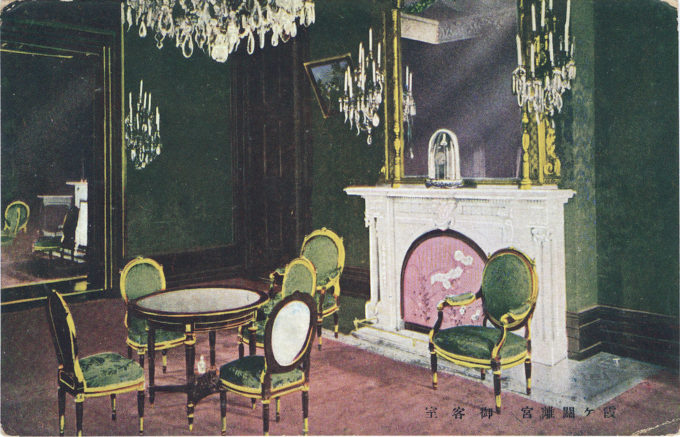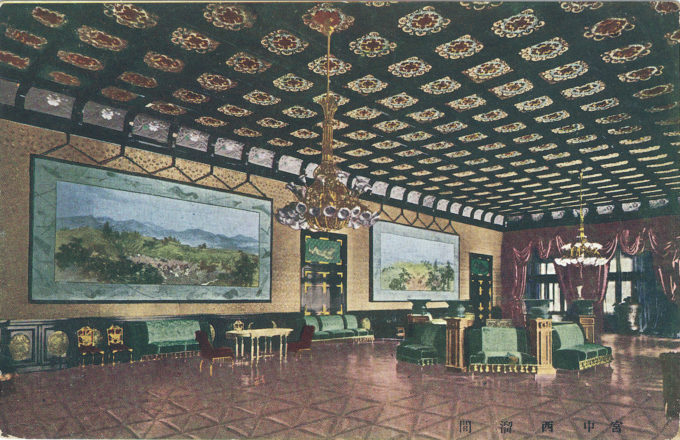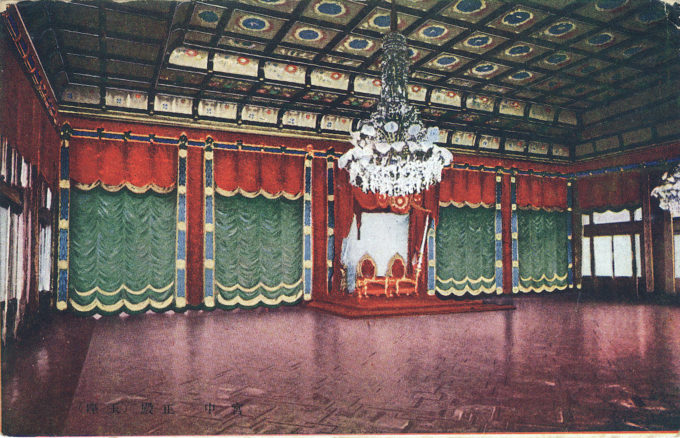
“Throne Hall”, Imperial Palace (Meiji Palace), c. 1920. The main buildings of the palace grounds were severely damaged during the Pacific War by errant firebombing in May 1945, and not fully reconstructed until 1968. The original Tokyo palace architect, Kigo Kiyotaka, came from a family of master carpenters employed for generations at the Kyoto Imperial Palace.
See also:
Imperial Palace Gates, c. 1905.
akasa
“The new Palace, inhabited by His Majesty the Mikado since 1889, is not accessible to the public; only those who are honoured with an Imperial Audience being admitted within its walls.
“Nevertheless the following description, abridged from the Japan Mail, may be of interest:
“Entering through long corridors isolated by massive iron doors, we find ourselves in the smaller of two reception rooms, and at the commencement of what seems an endless vista of crystal chambers . This effect is due to the fact that the shöji, or sliding doors, are of plate glass. The workmanship and decoration of these chambers are truly exquisite.
“It need scarcely be said that the woods employed are of the choicest description, and that the carpenters and joiners have done their part with such skill as only Japanese artisans seem to possess. Every ceiling is a work of art, being divided by lacquer ribs of a piece of a deep brown colour into numerous beautifully executed decorative design, painted, embroidered, or embossed.
“The walls are covered in most cases with rich but chaste brocades, except in the corridors, where a thick, embossed paper of charming tint and pattern shows what skill has been developed in this class of manufacture at the Imperial Printing Bureau.
“… The furniture of the palace was imported from Germany. Externally the principal buildings are all in pure Japanese style. The appropriation for the Palace was $3,000,000 [$93,000,000 in 2019 dollars] – but to this amount must be added considerable sums voluntarily offered by wealthy Japanese, as well as valuable contributions of materials.”
– A Handbook for Travellers in Japan, by Basil Hall Chamberlain & W.B. Mason, 1901
- “State banquet hall” [homei-den], Imperial Palace (Meiji Palace), c. 1920.
- “Drawing room” [matsukaze-no-ma], Imperial Palace (Meiji Palace), c. 1920.
- “Guest room” [go-kyakushitsu], Imperial Palace (Meiji Palace), c. 1920.
- “West Gathering Hall” [nishi-tamarikan], Imperial Palace (Meiji Palace), c. 1920.


